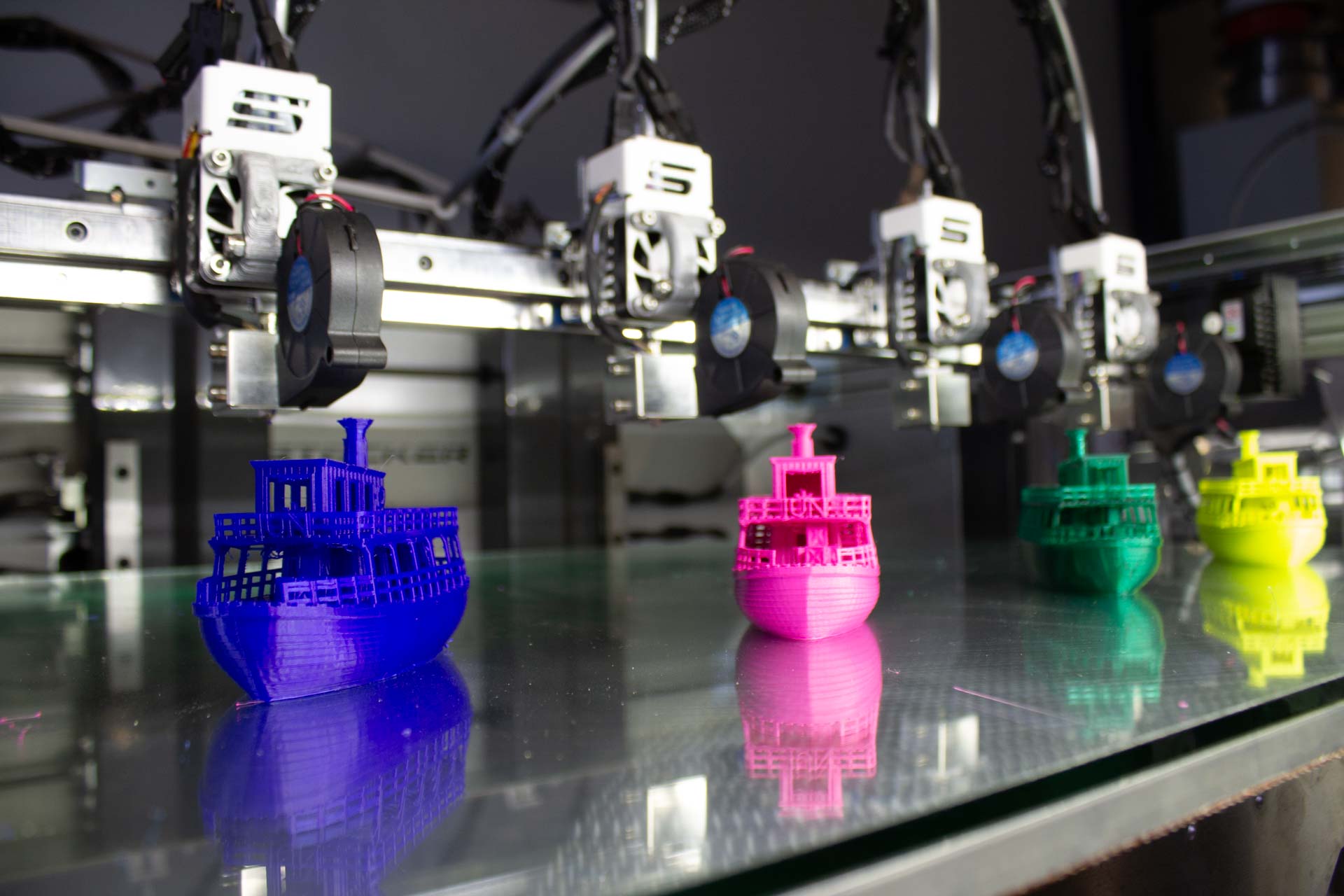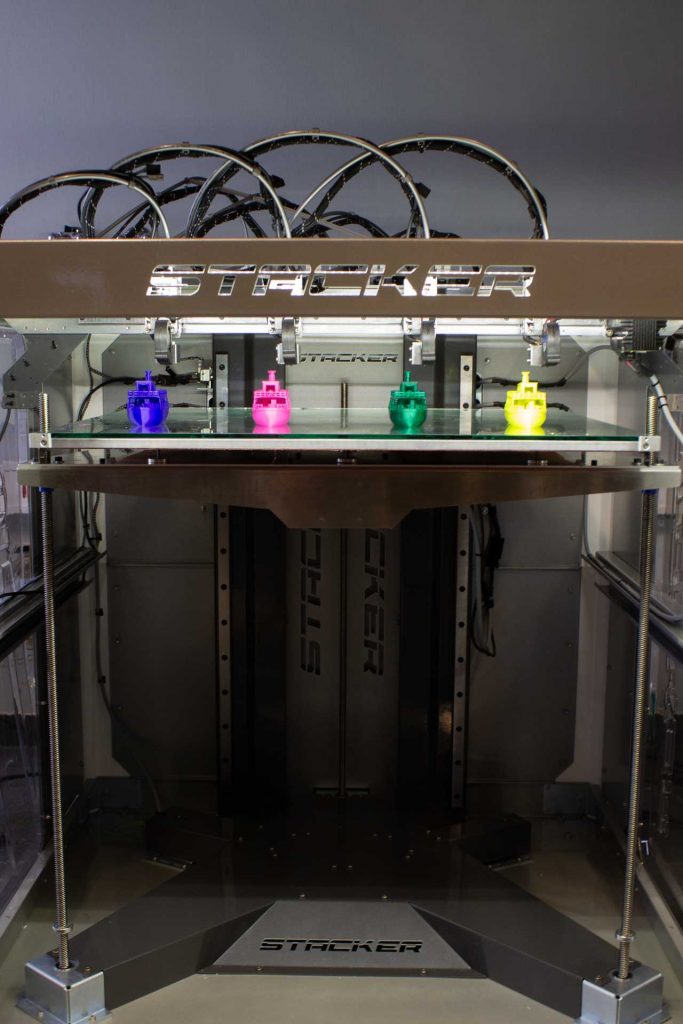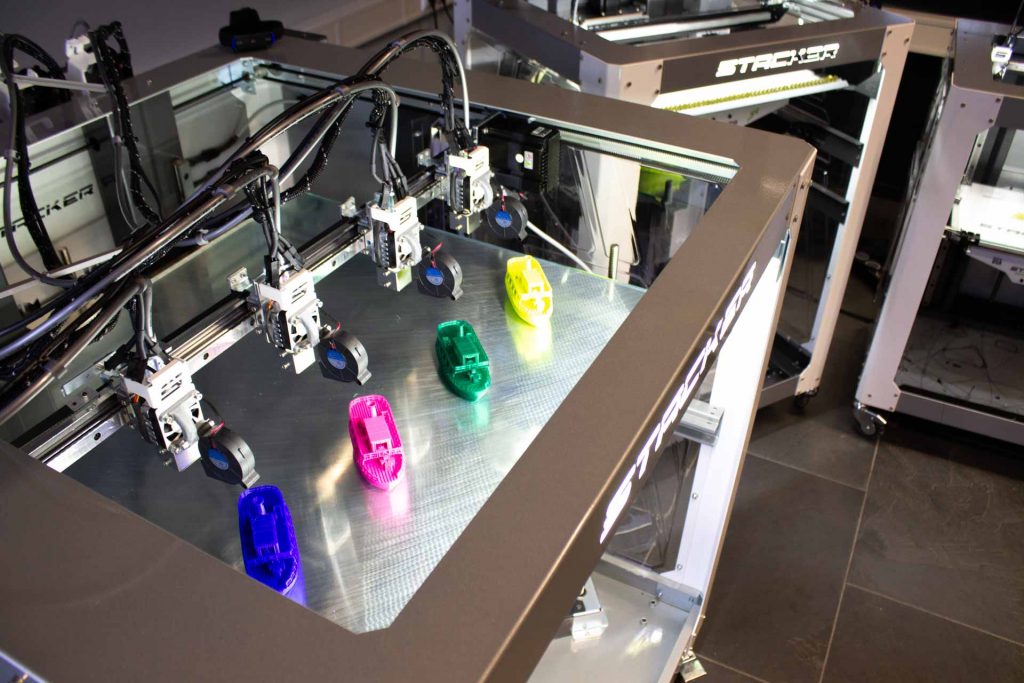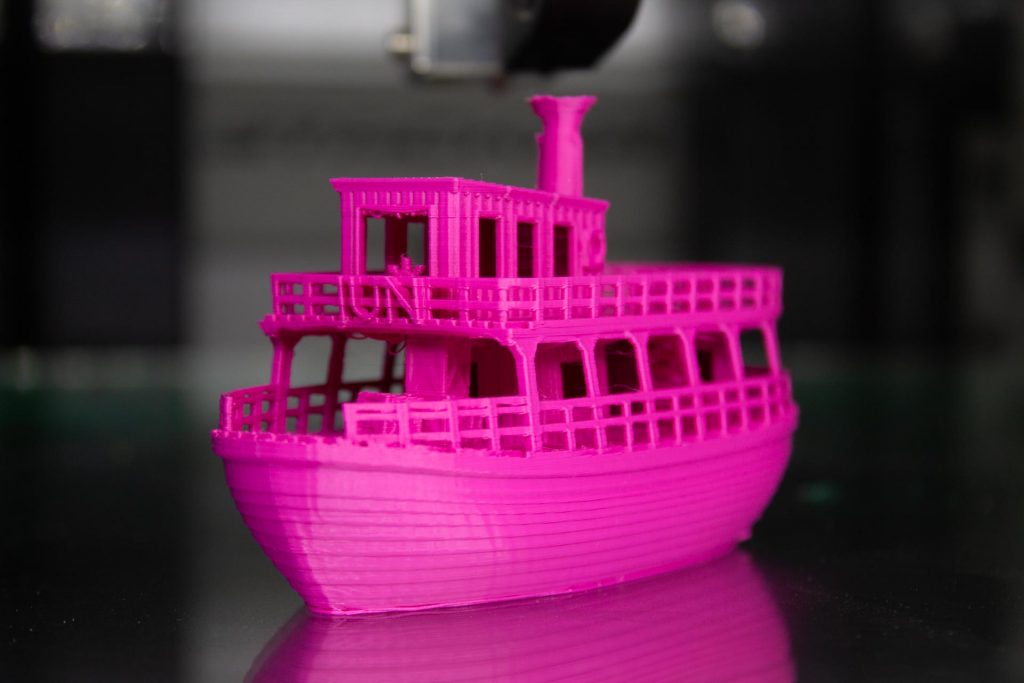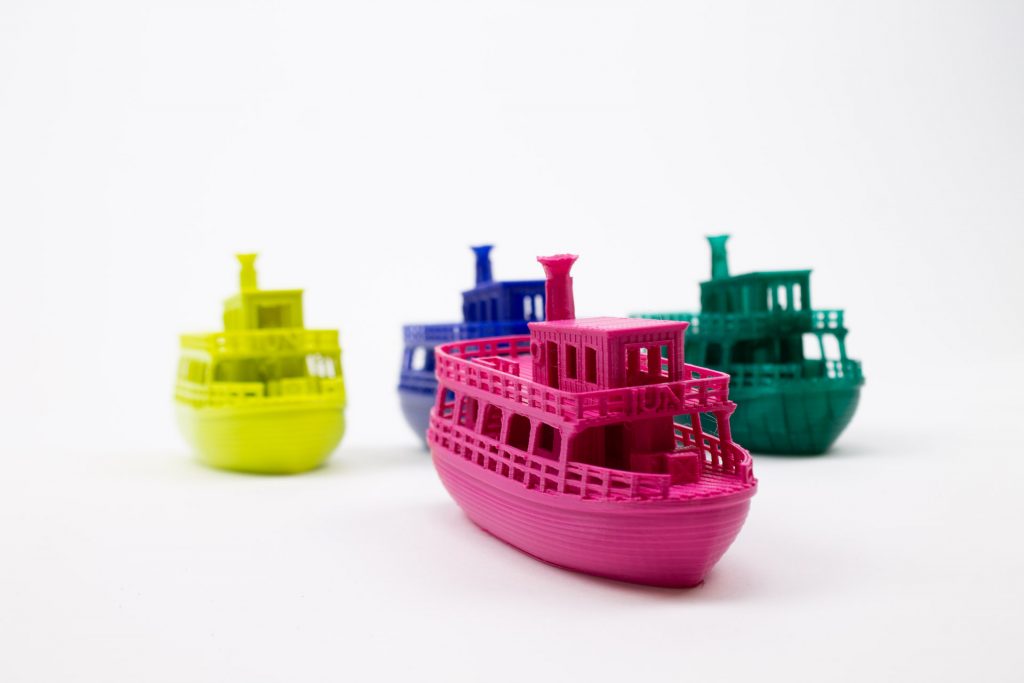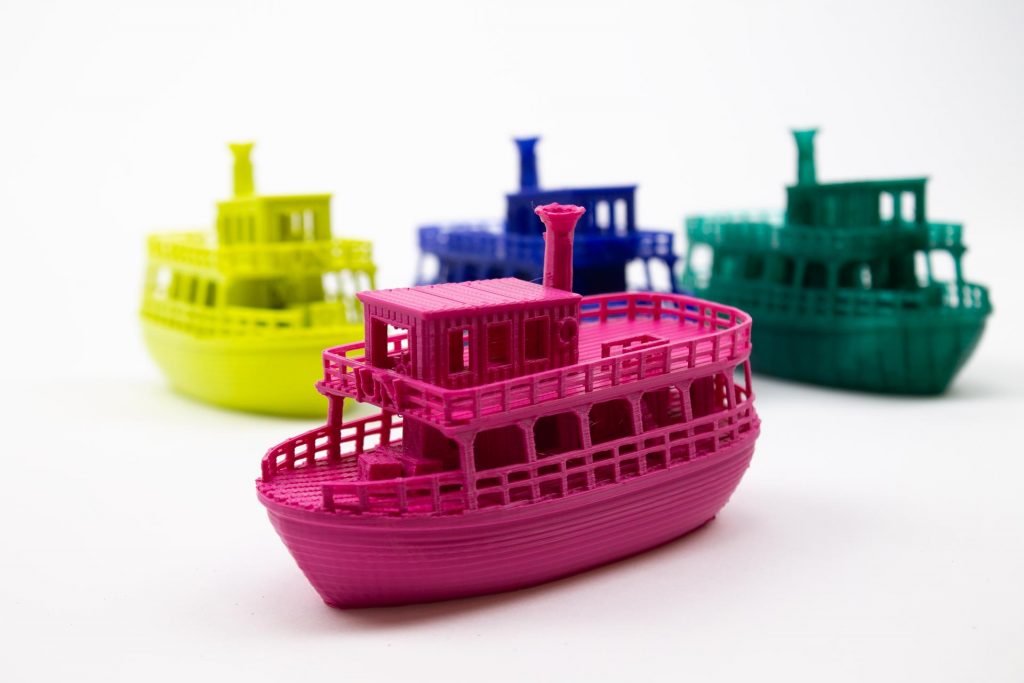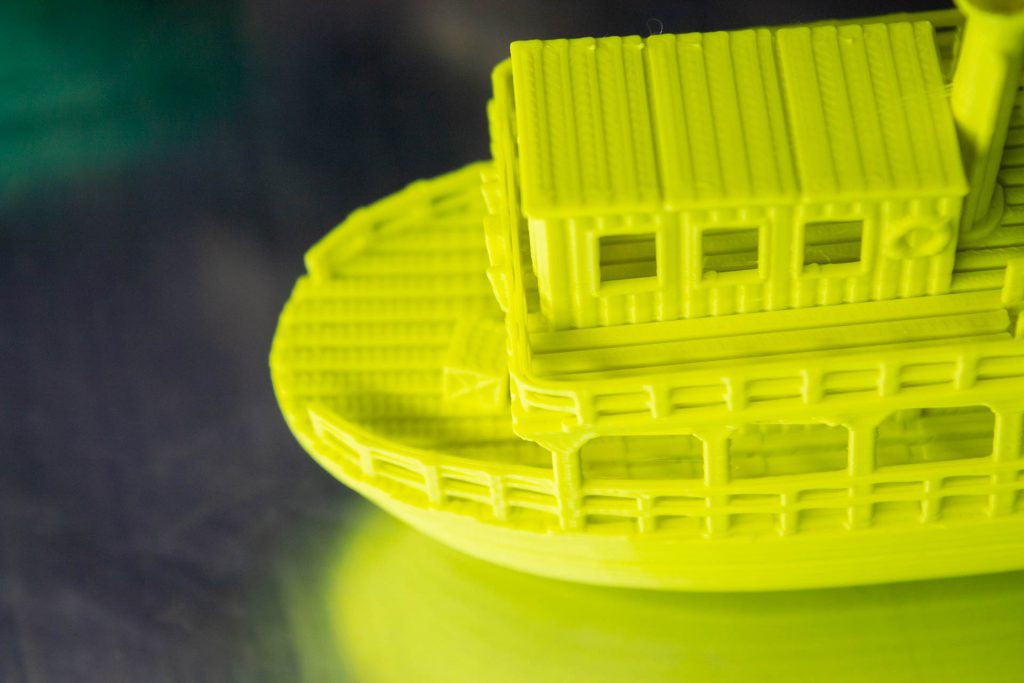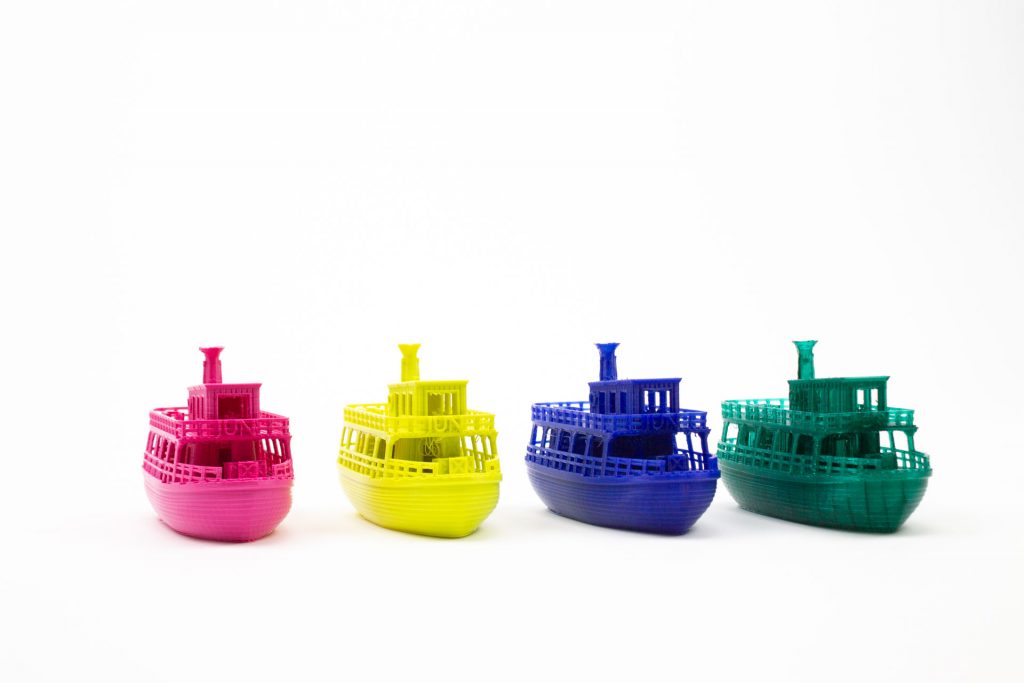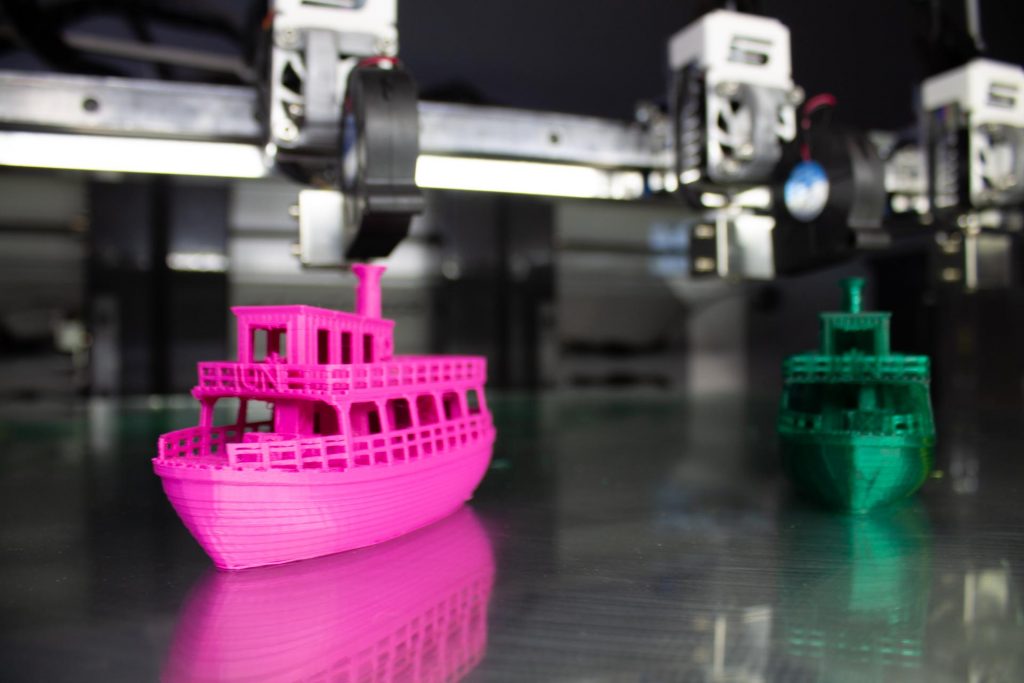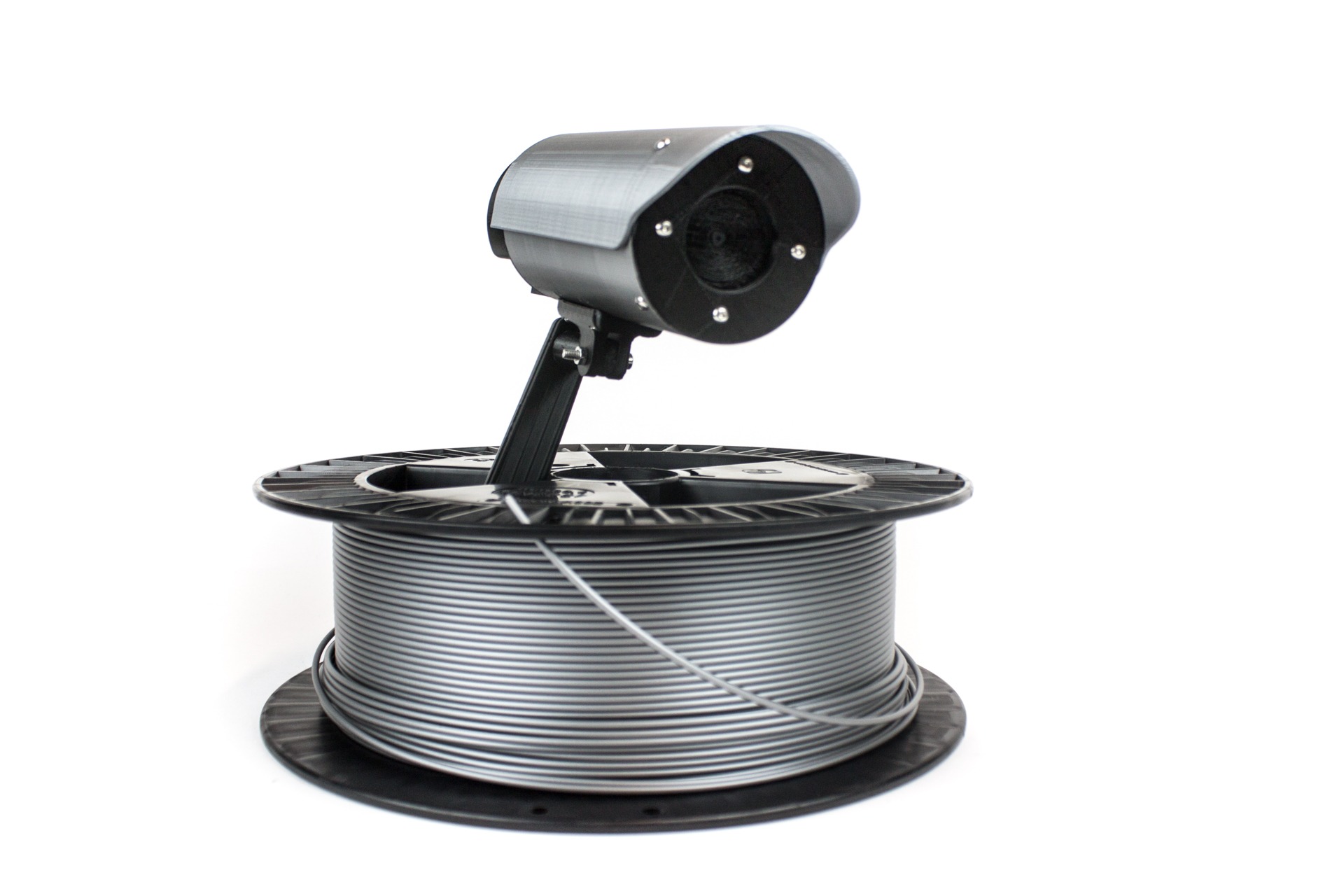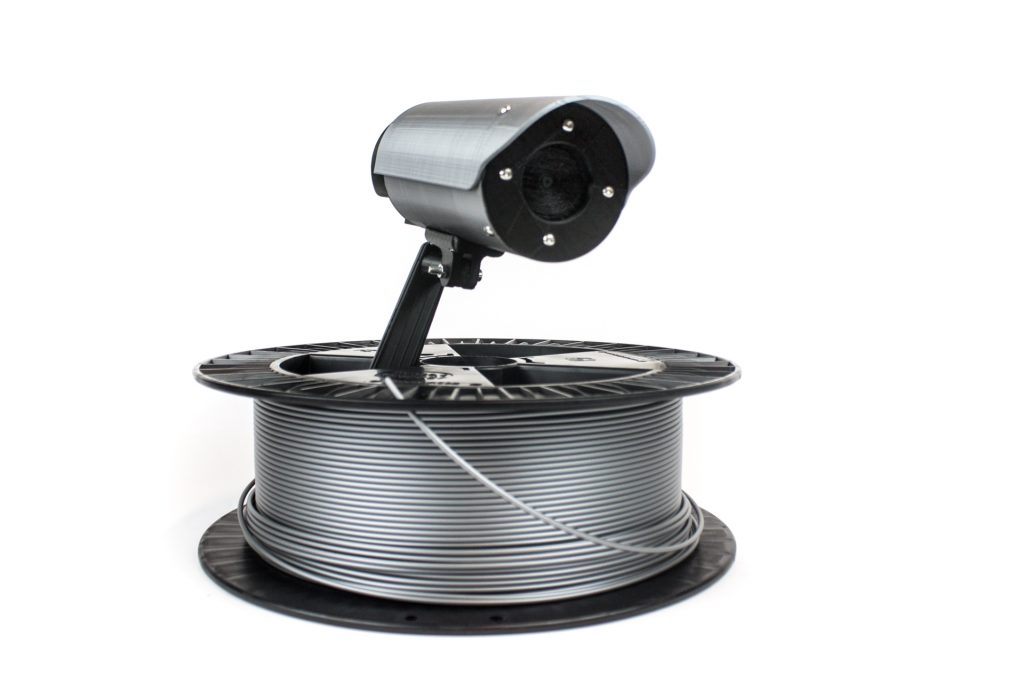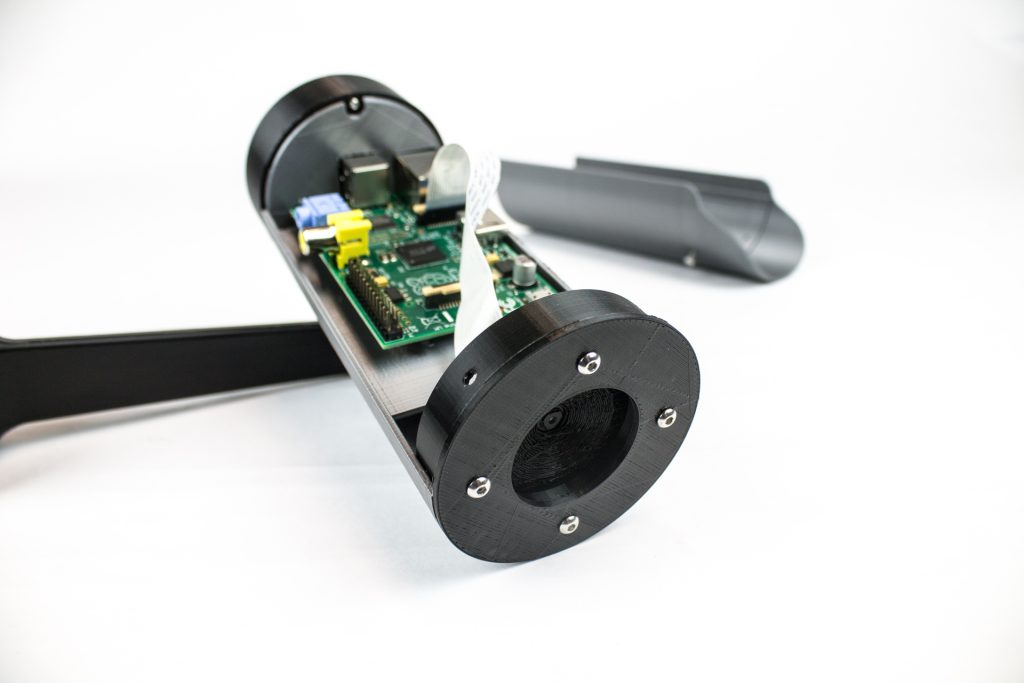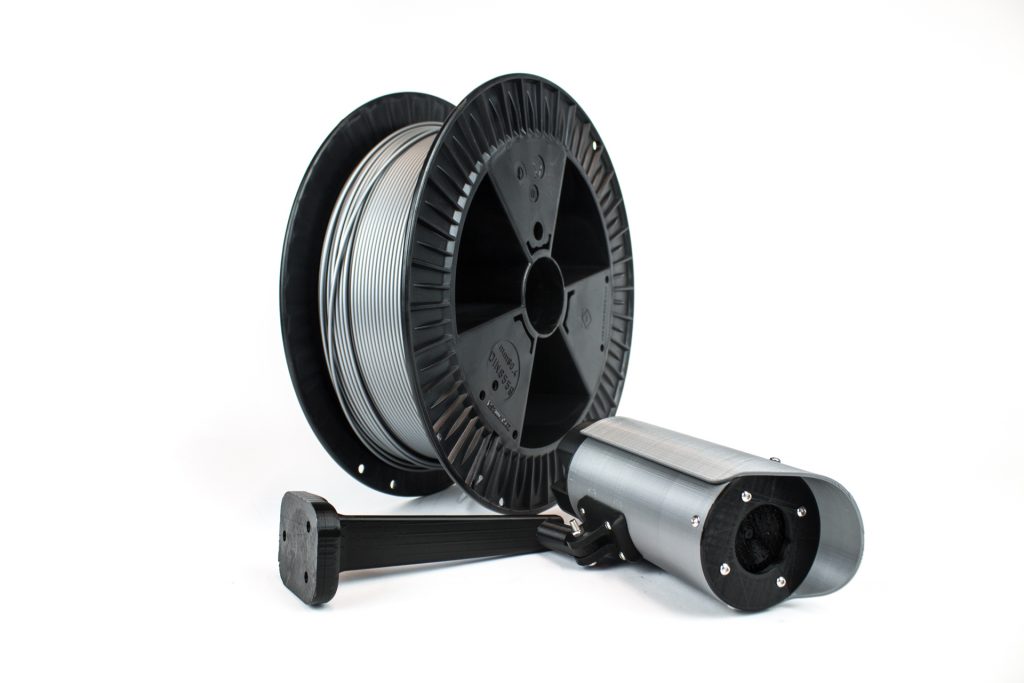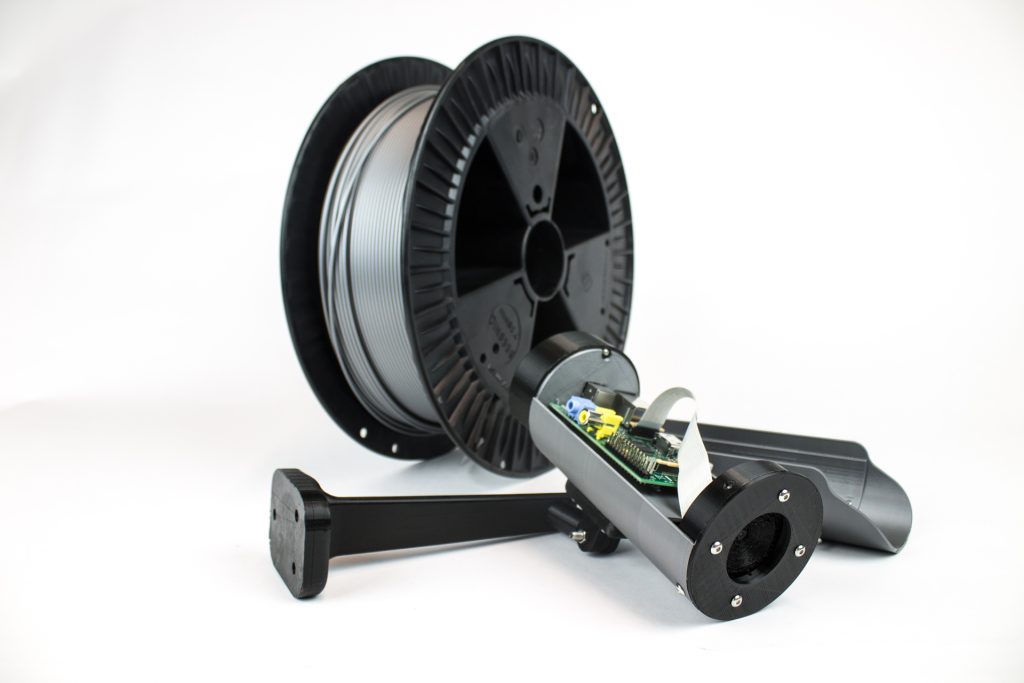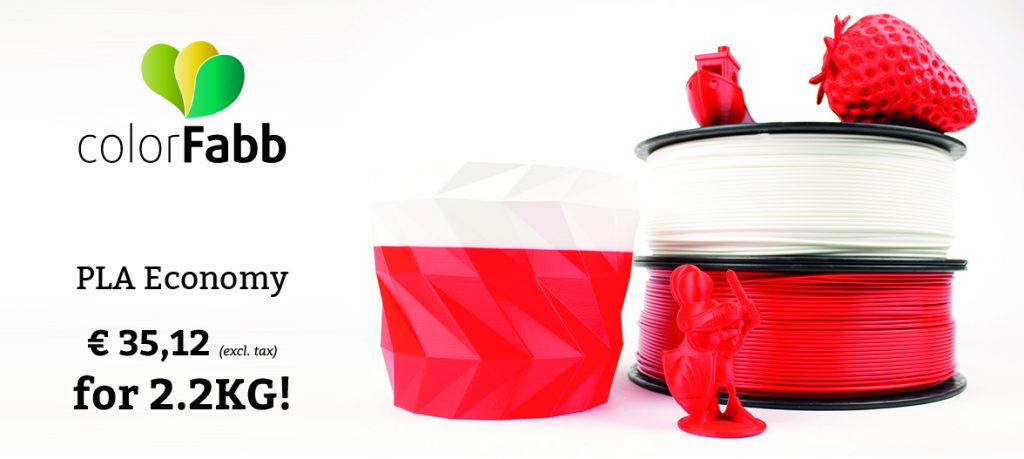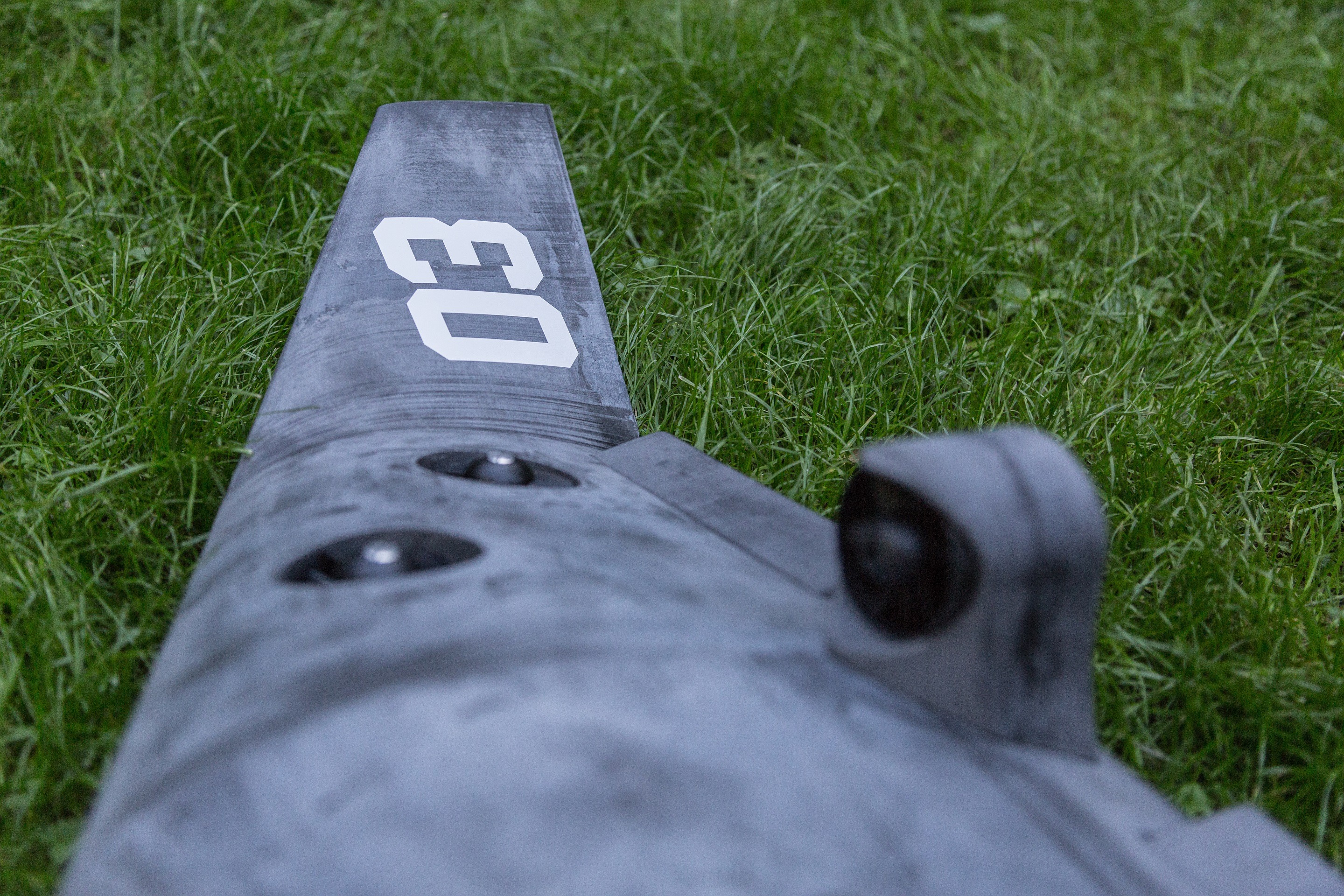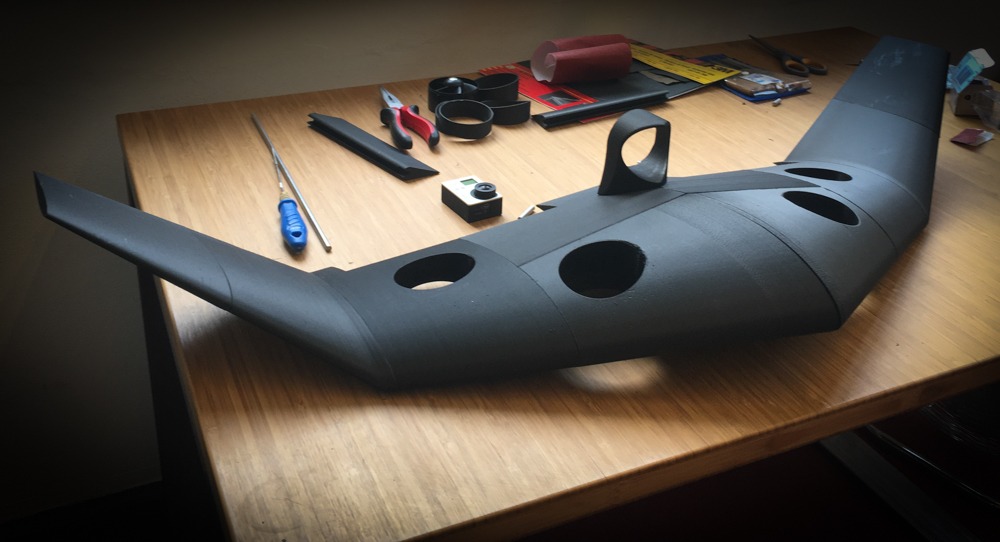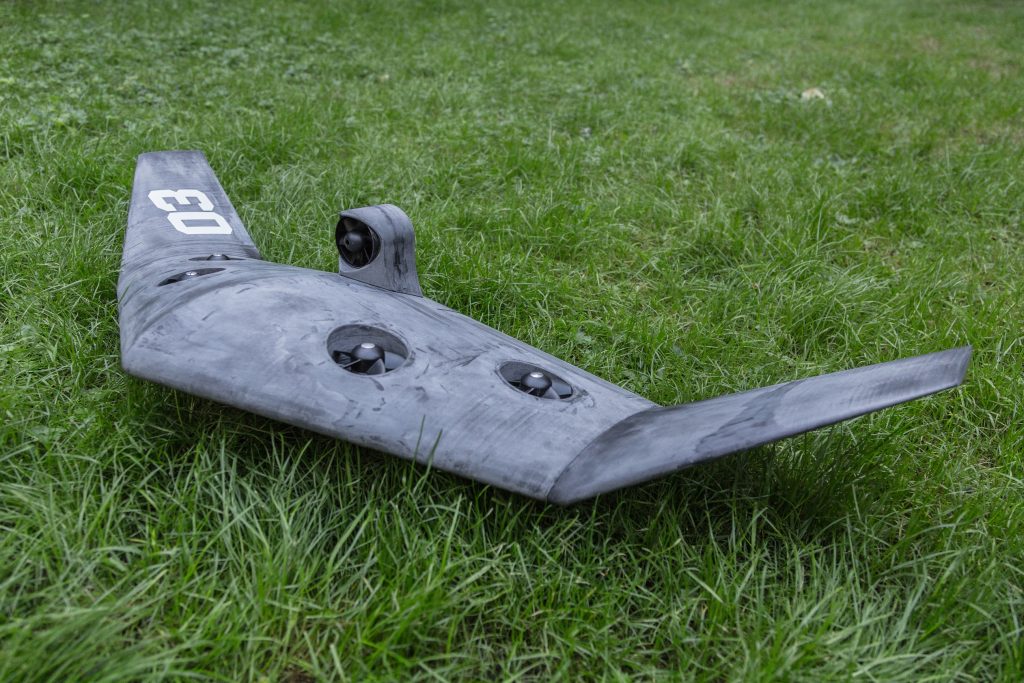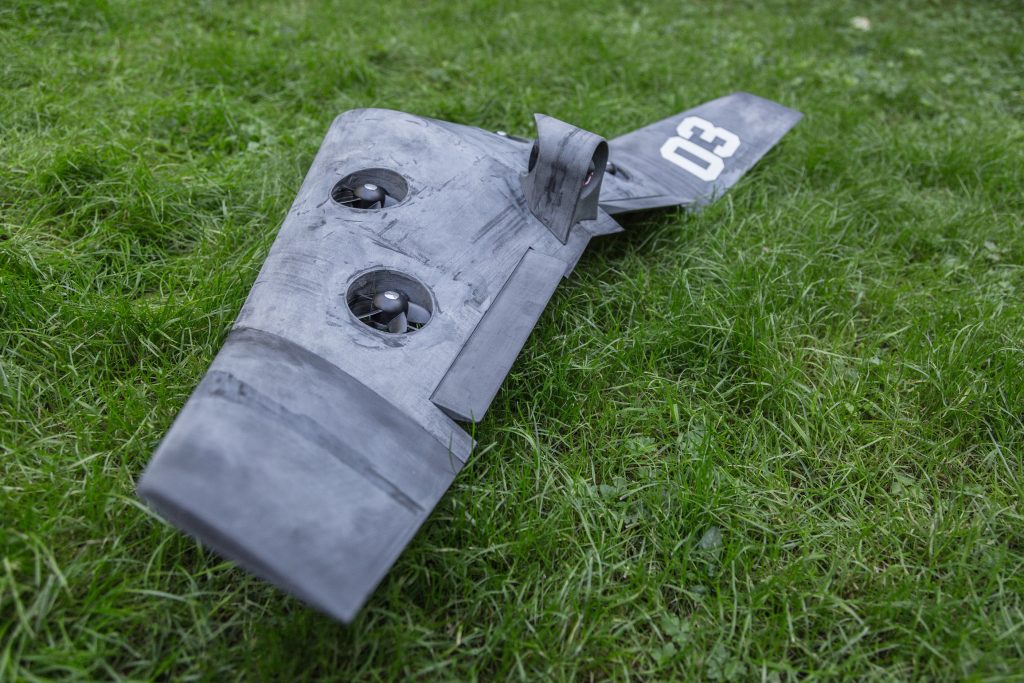With a lot of 3D printing tools at our disposal it becomes easier (and more fun!) to print large, multi-material prints. As a visual prototype we printed this rolling jack with various materials in our print lab on the Stacker S4 XL.
Design by Sevatar (Grabcad link)
We printed on the Stacker S4-XL with a 0.6mm nozzle for an optimal balance between speed and quality. It took quite some time to print this one:
- Main body: 70 hours – 1kg material used
- Other silver parts: 65 hours – 850 gr. material used
- Black parts: 20 hours – 280gr
- White parts: 12 hours – 140gr
- Handle: 2,5 hours – 30 gr.

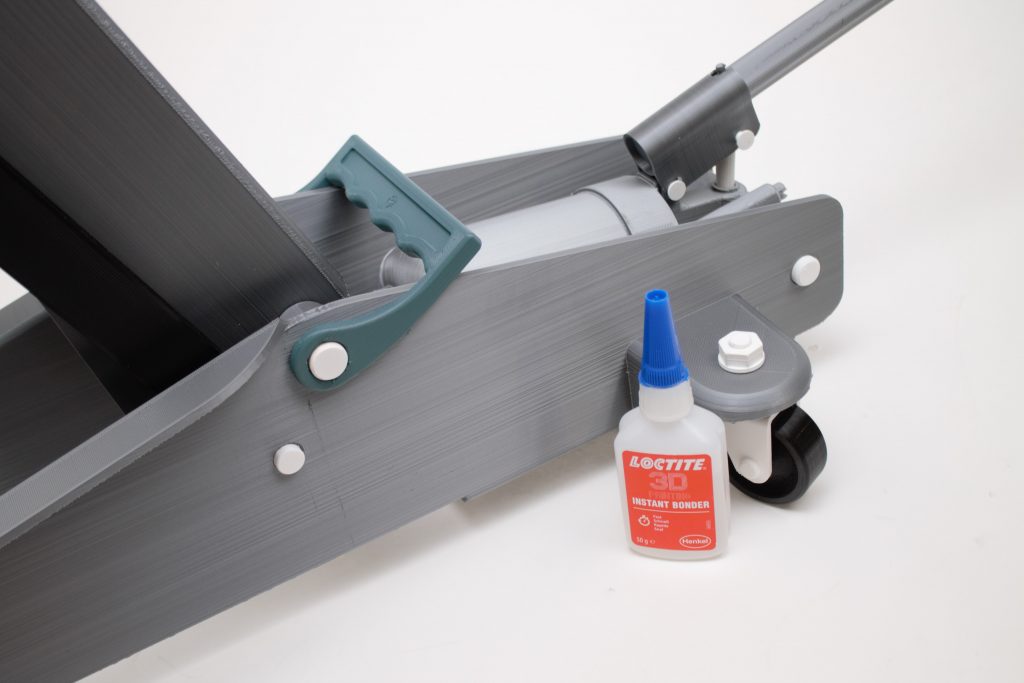
The rolling jack is entirely made out of PLA and we used various PLA grades from our portfolio where they would fit best, aesthetically:
All these materials are available in our webshop and ship from stock! All parts of the rolling jack were glued together with Loctite glue, which is now also available in our webshop! Check out the accessories we currently offer by clicking here.
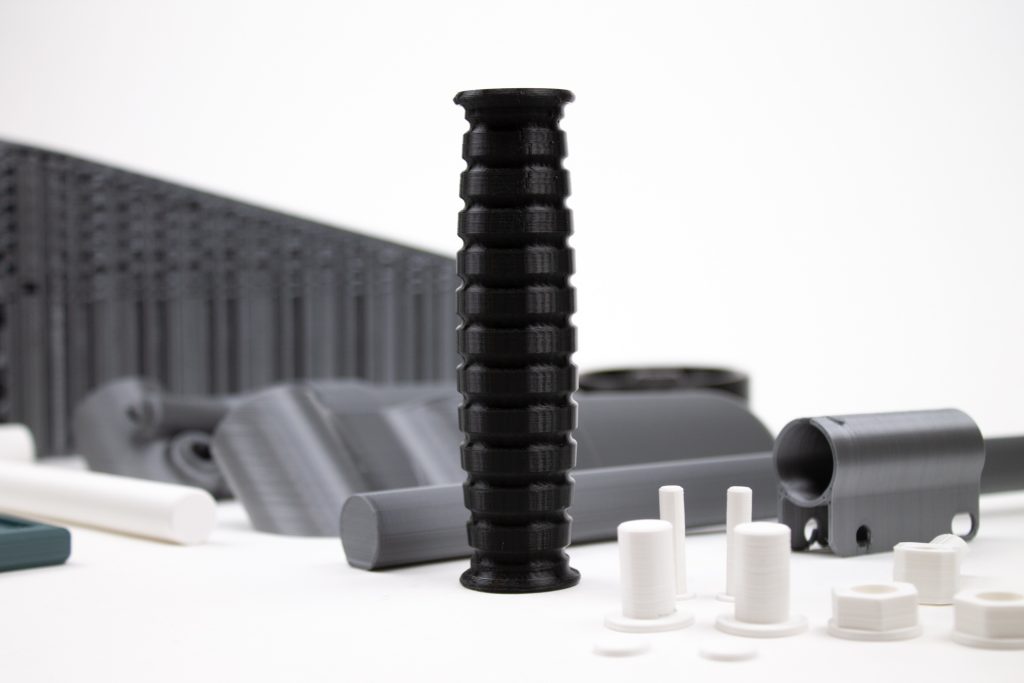
ABOUT STACKER 3D PRINTERS
The Stacker 3D printers are industrial grade FFF 3D printers. Recently the even larger Stacker S4 XL was added to the portfolio. Multiple print heads and a large build volume make them versatile printers. Small series production or large scale prototyping are no problem for the Stacker printers! This US based printer is very reliable and is a perfect match for any professional looking for serious 3D printing. You can find the full product specifications on our dedicated Stacker page.
For Stacker the term “industrial grade” is not a hollow marketing term. It means their printers are designed for extra long service life, extremely low maintenance and that the printer will maintain its positional accuracy throughout its life cycle. This printer has been designed to be used in a professional environment, be it for large prototypes or small series production.
The Stacker printers on display in our print lab
As many of you know, we are the distributor of Stacker 3D printers in Europe. We have been working with Stacker ever since their first prototype and now have several in our print lab. In the past 6 years we have seen 3D printing emerging from a hobby market to more professional uses. A lot of our users are using 3D printing to make a living or at least support their business in one way or another.
Interested? Get a quote or contact us!
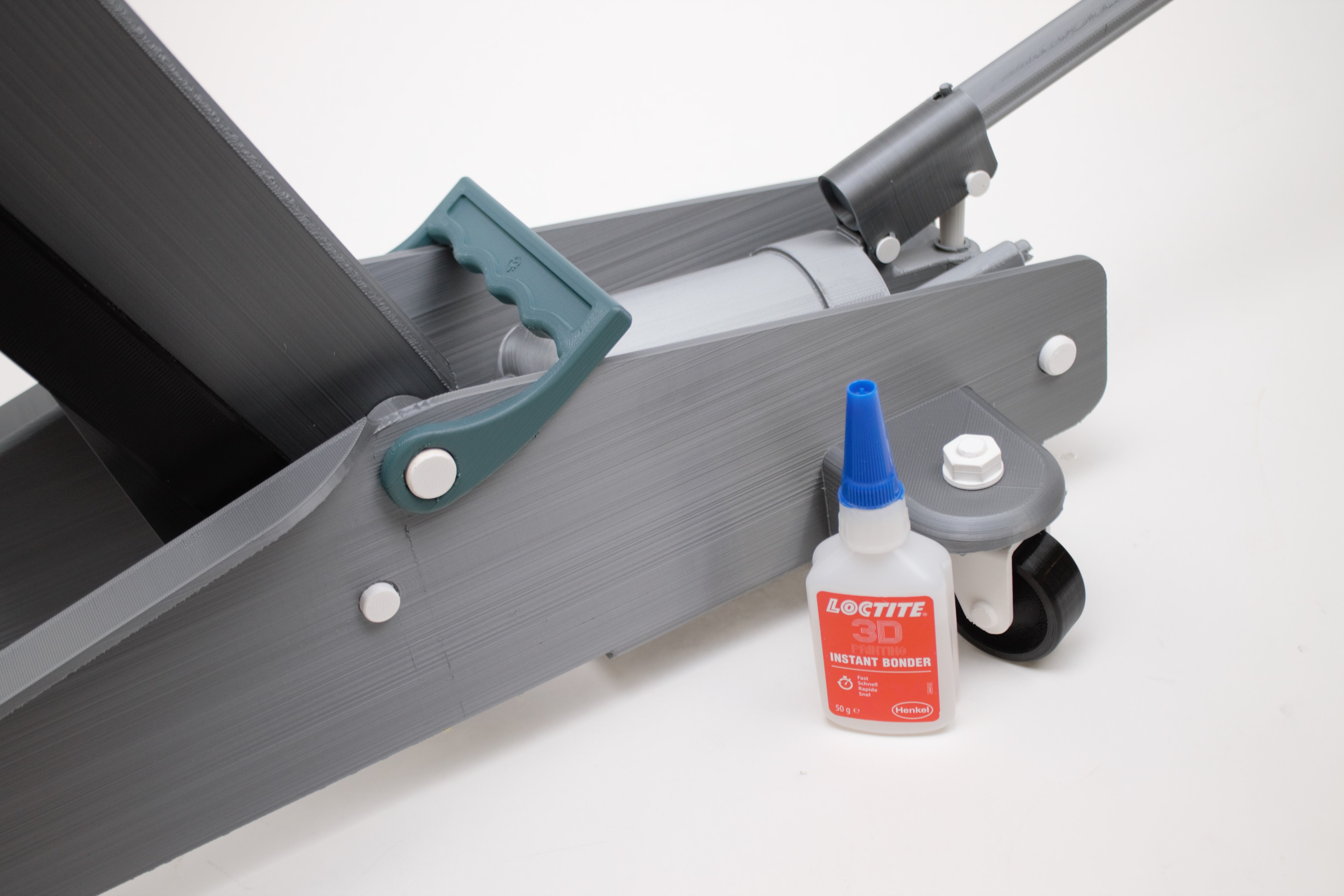
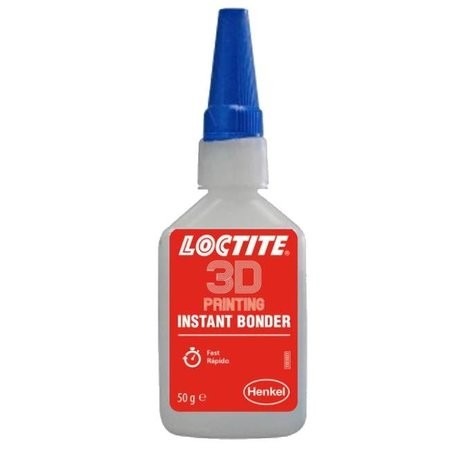

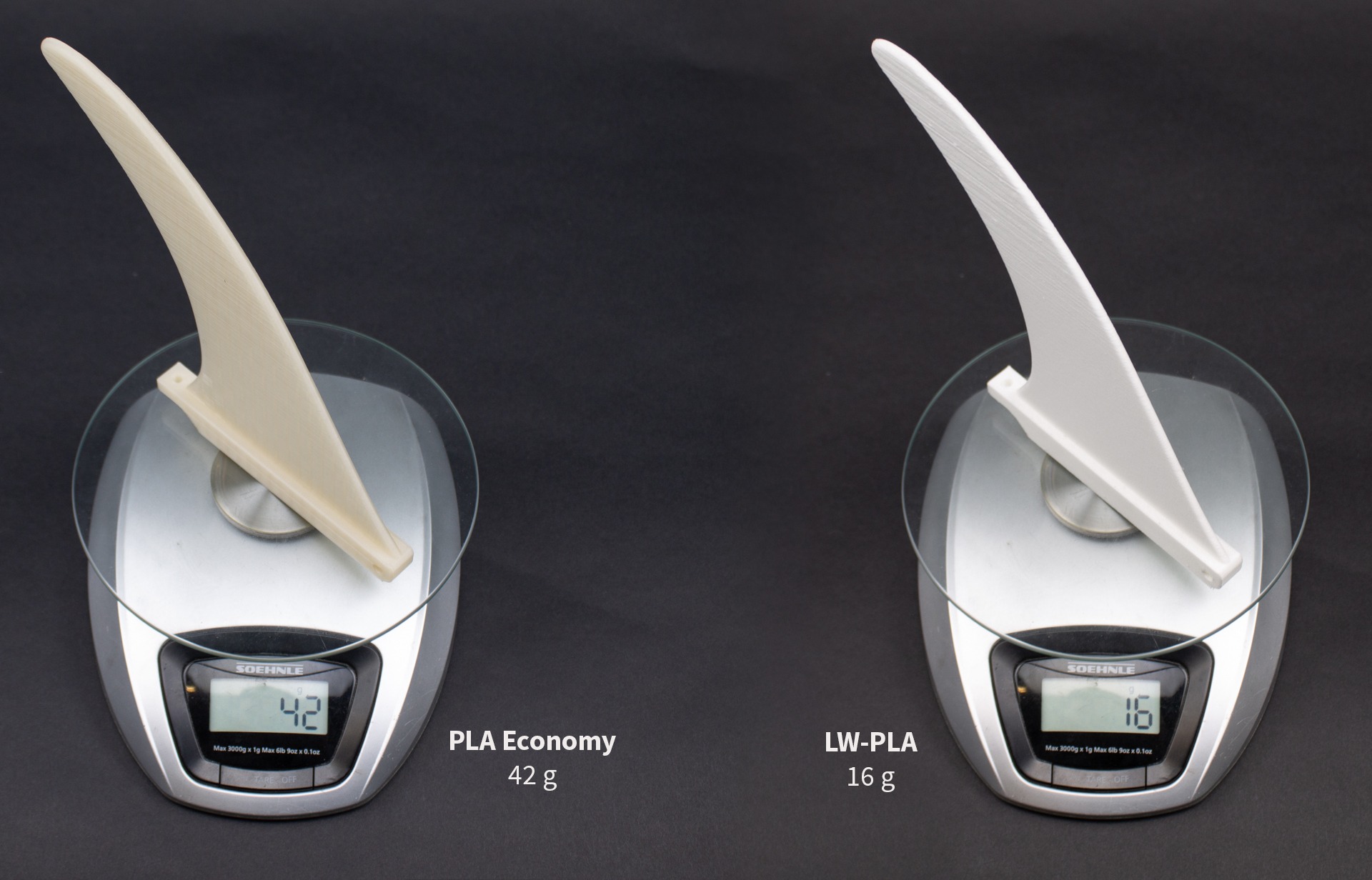
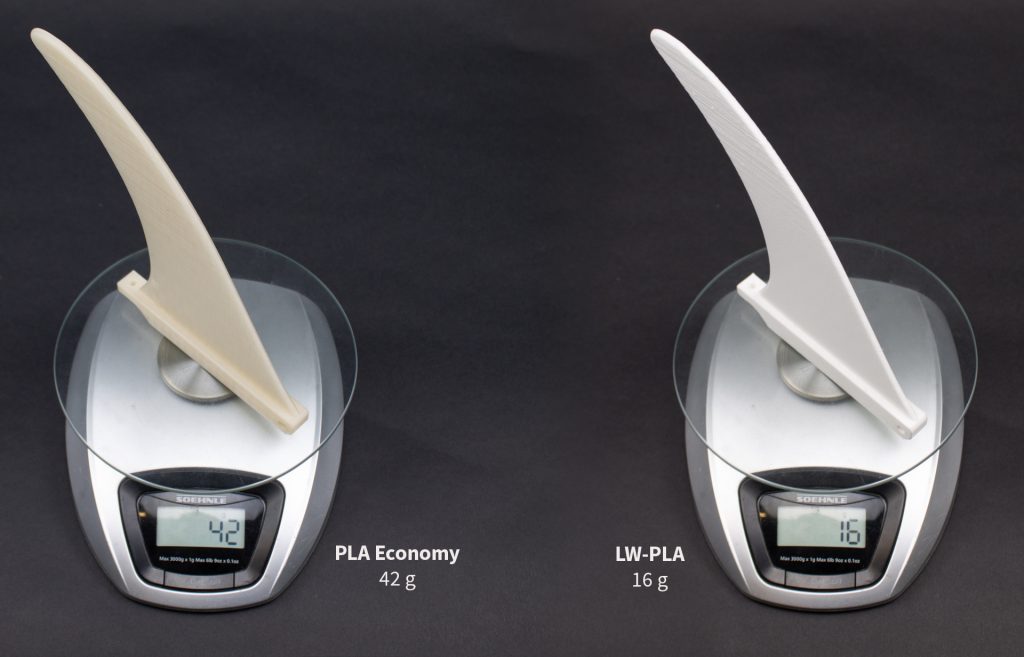
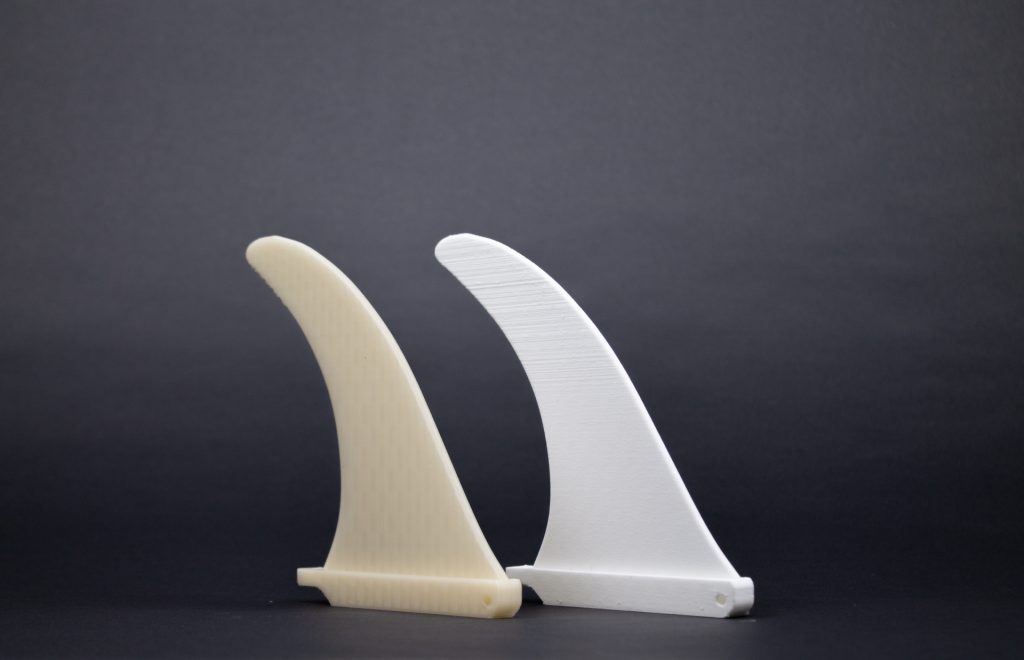
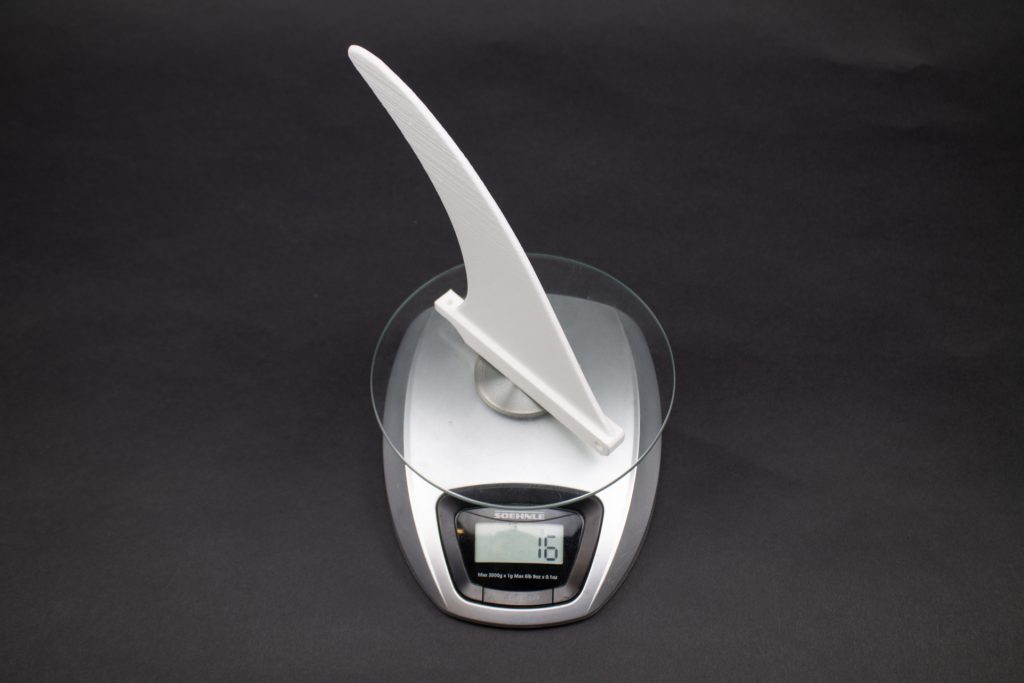 Decreasing flow means using less filament. Therefore users can expect to print 2-3 times more parts using LW-PLA compared to a regular PLA spool. LW-PLA prints in a fantastic matte looking surface finish and is very easy to post process. Any oozing or stringing artifacts rub right off and the surface is easily sanded for a smooth finish.
Decreasing flow means using less filament. Therefore users can expect to print 2-3 times more parts using LW-PLA compared to a regular PLA spool. LW-PLA prints in a fantastic matte looking surface finish and is very easy to post process. Any oozing or stringing artifacts rub right off and the surface is easily sanded for a smooth finish.
